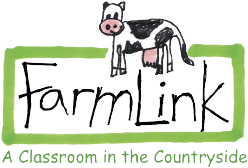Objectives:
To understand
(i) the main stages of the lifecycle of a chicken and that some of these processes are common to other birds and animals.
(ii) how to treat animals with care & sensitivity.
Methodology:
A class is responsible for looking after an incubator containing 12 eggs, most of which will hatch into chicks. The class will then learn how to care for these chicks in the classroom and then possibly keep them permanently in school or return them to Farmlink when they have hatched.
Skills & Concepts:
How to treat animals with care & sensitivity, ask questions, gain firsthand experience of hatching chicks in an incubator, follow instructions about how to turn eggs & to keep constant temperature & humidity so that the embryo develops properly.
Lesson Plan Classroom activity.
Timing Activity Allow 30 minutes
- Ask students what they know about chickens & eggs.
- Student to draw an egg on the board, showing yolk, albumen, air sac
- Break an egg into a glass to show these parts.
- Discuss the functions of the egg including the porous shell & how the egg needs to be fertile before an embryo will develop.
- Set up an incubator with 12 eggs & instruct how to maintain a constant humidity & temperature.
- Discuss time it will take (21days) for the chicks to hatch.
- Discuss how to care for the chicks & their long term future.
- Somebody will candle the eggs after 10 days to see how many eggs are viable.
Resources
12 fertilised eggs
incubator(from Farmlink)
source of electricity
water
an egg
glass container
chick crumbs
cardboard box
water container for chicks
wood shavings
recording sheets/web cam?
Cross Curriculum Linkages delivered by the above activities:
Science, Maths, English, PSHE, Technology




